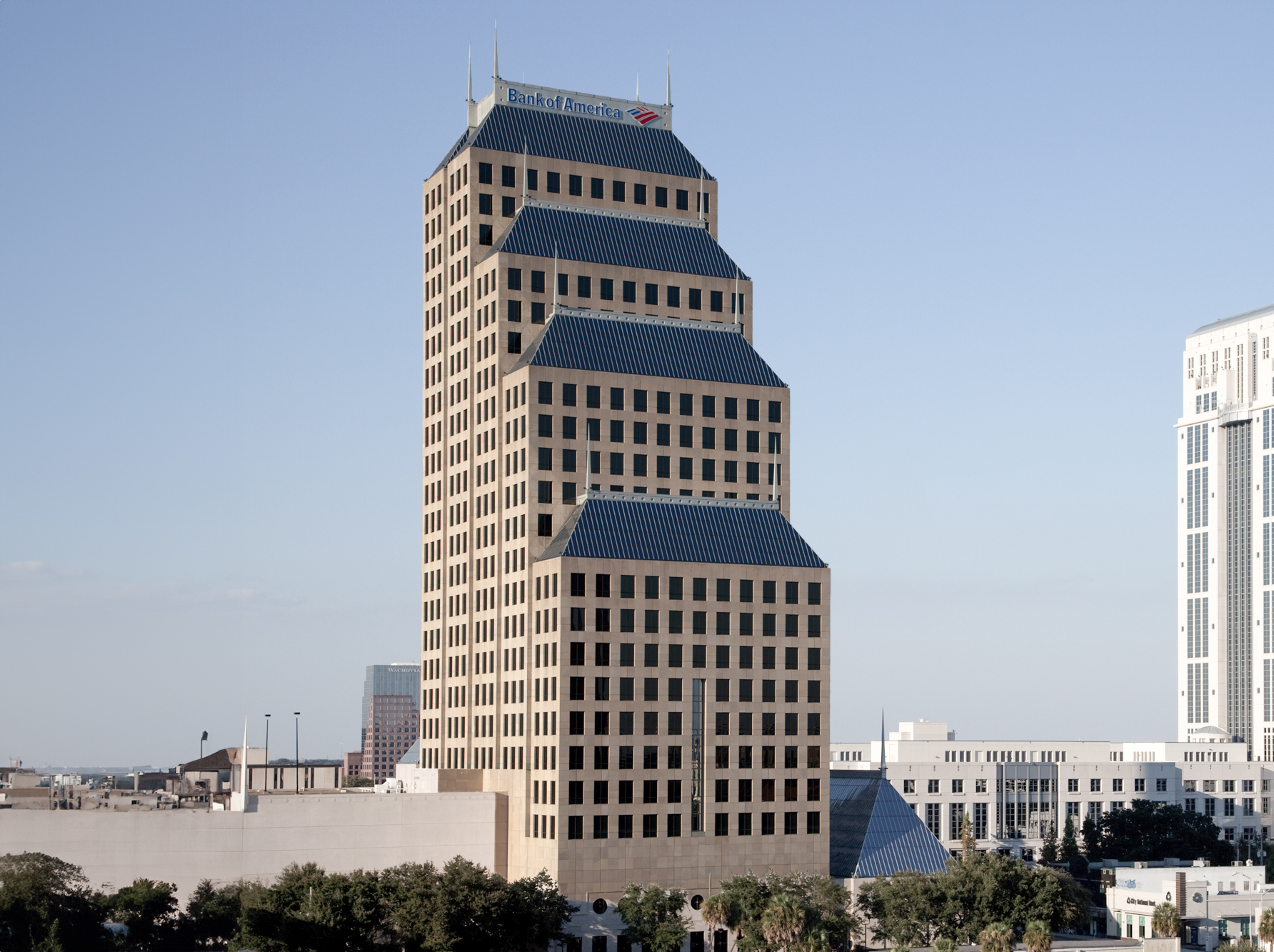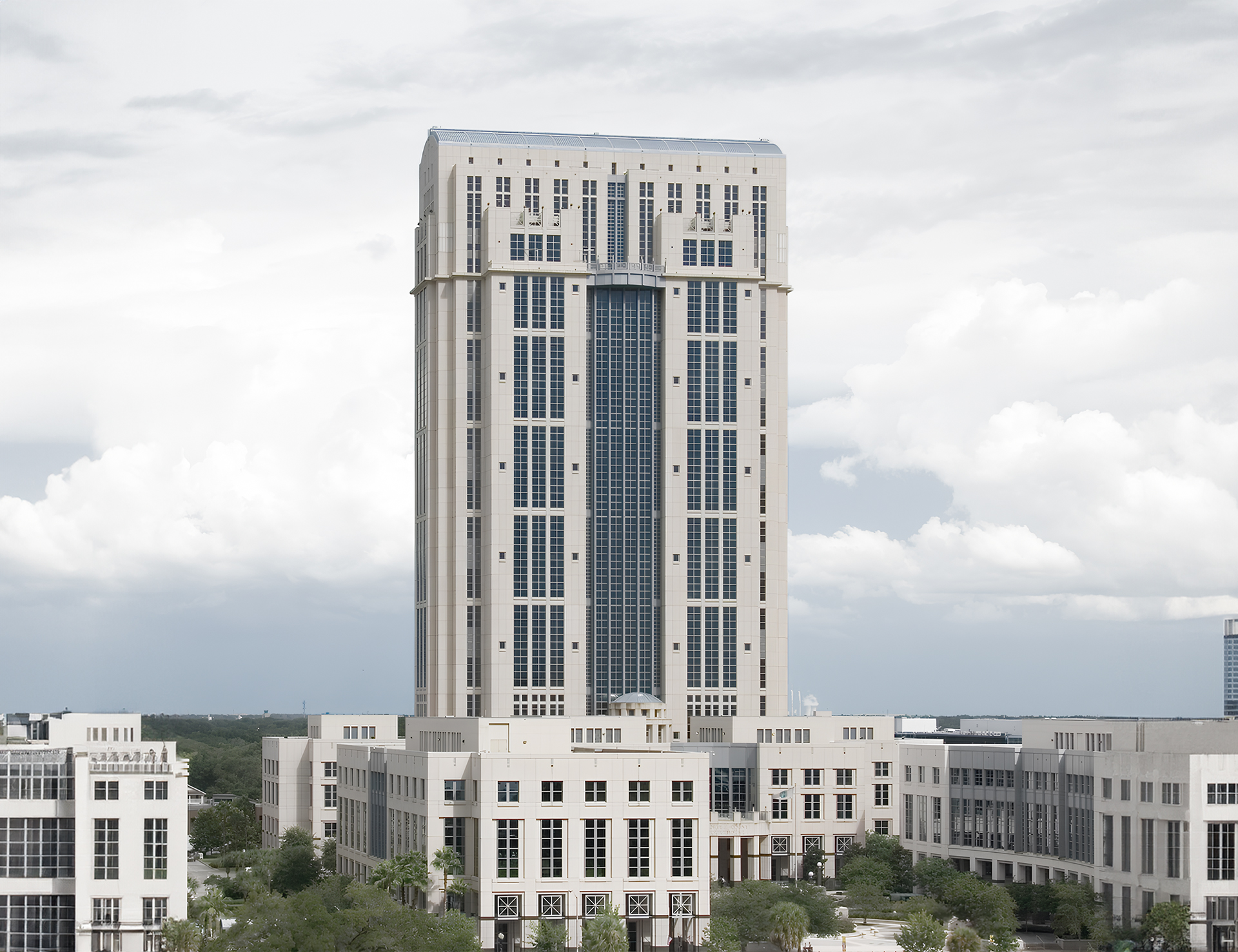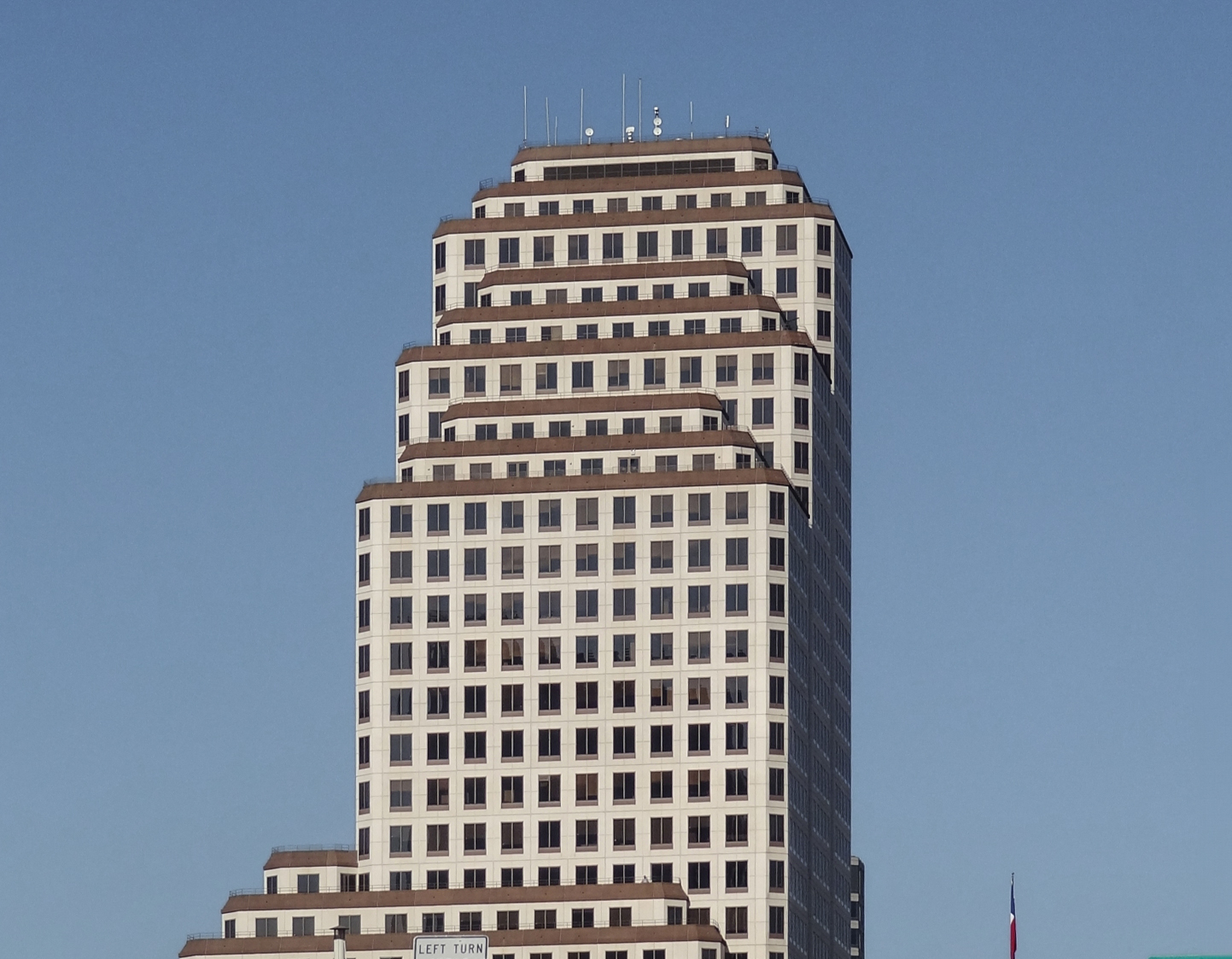The Bank of America Center is a Postmodernist skyscraper designed by Morris-Aubry Architects, and built between 1985 and 1988 in Orlando, FL.
Bank of America Center is not the only name you might know this building by though. It is common for companies to want to attach their names to iconic buildings when they move in, or for the general public to come up with nicknames, and this one is no exception. The Bank of America Center is also known, or has been known as, NationsBank at duPont Centre, or Barnett Bank Center.
Its precise street address is 390 North Orange Avenue, Orlando, FL. You can also find it on the map here.



